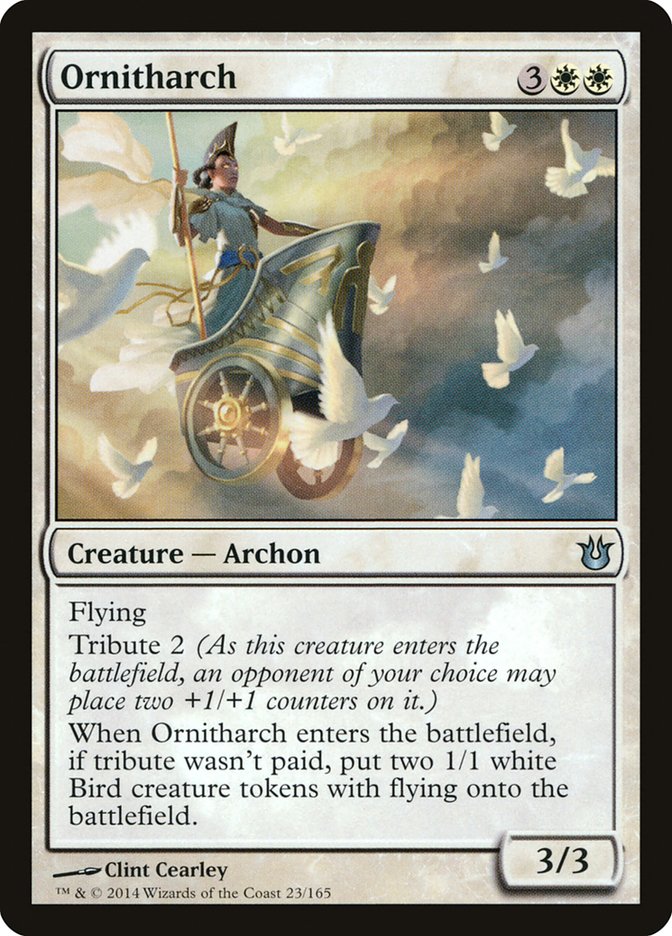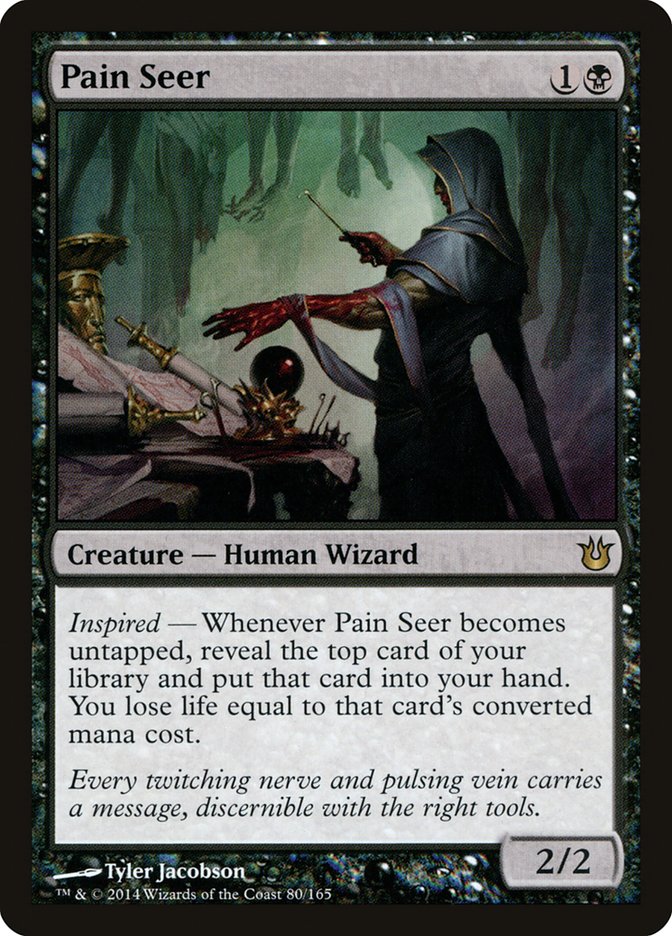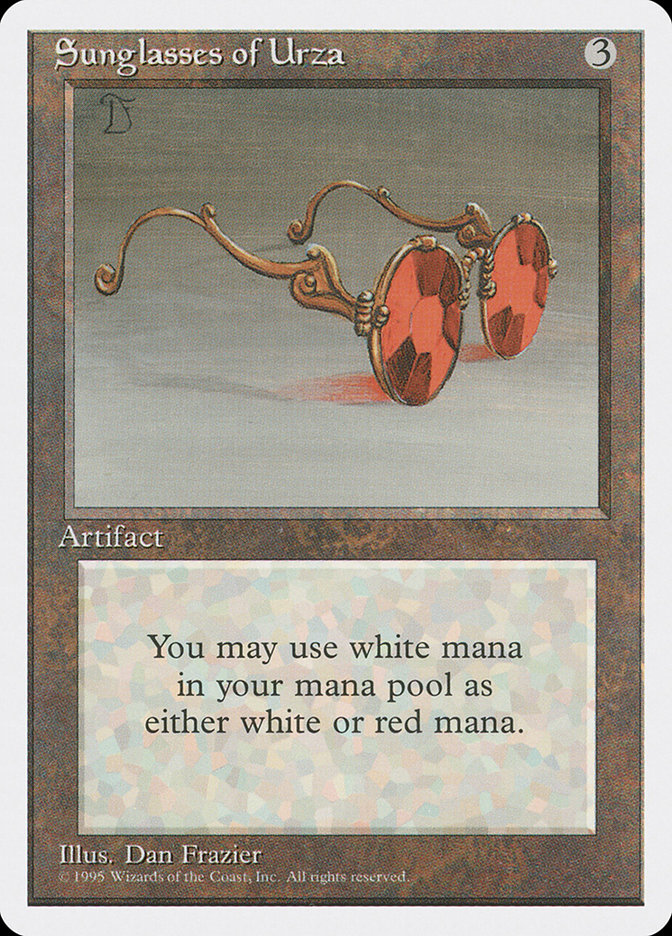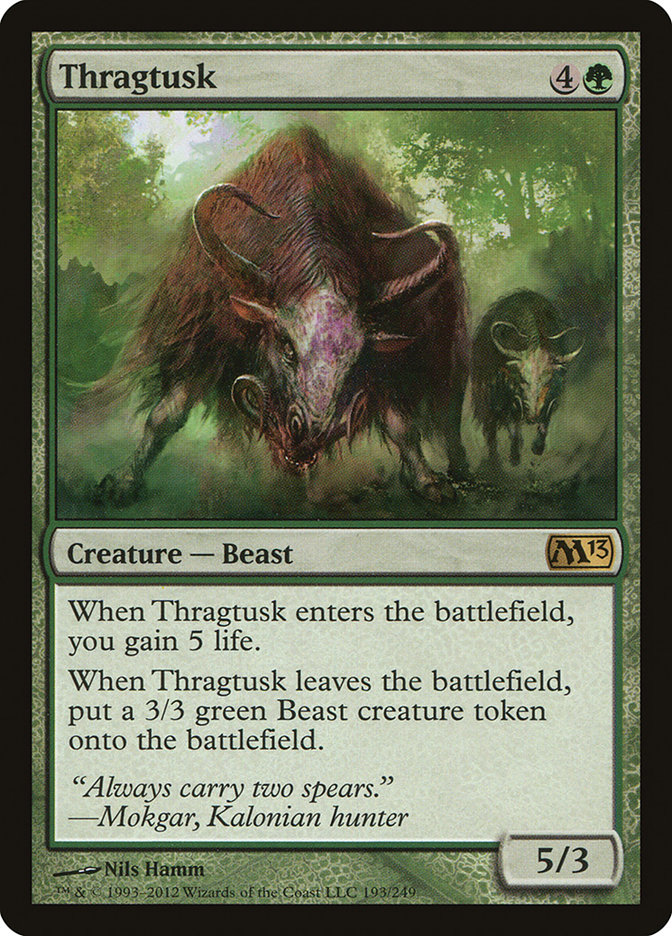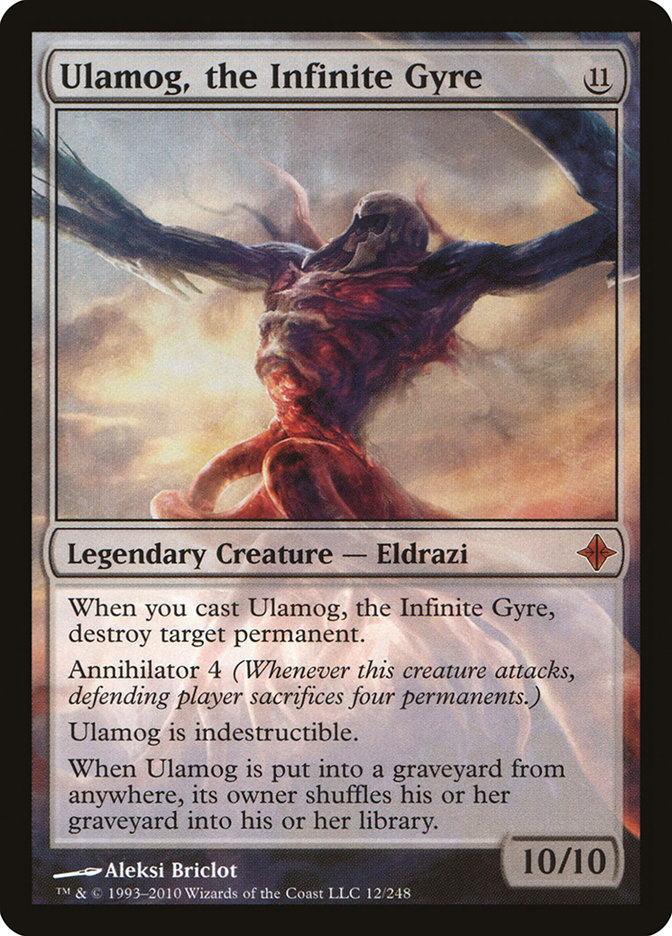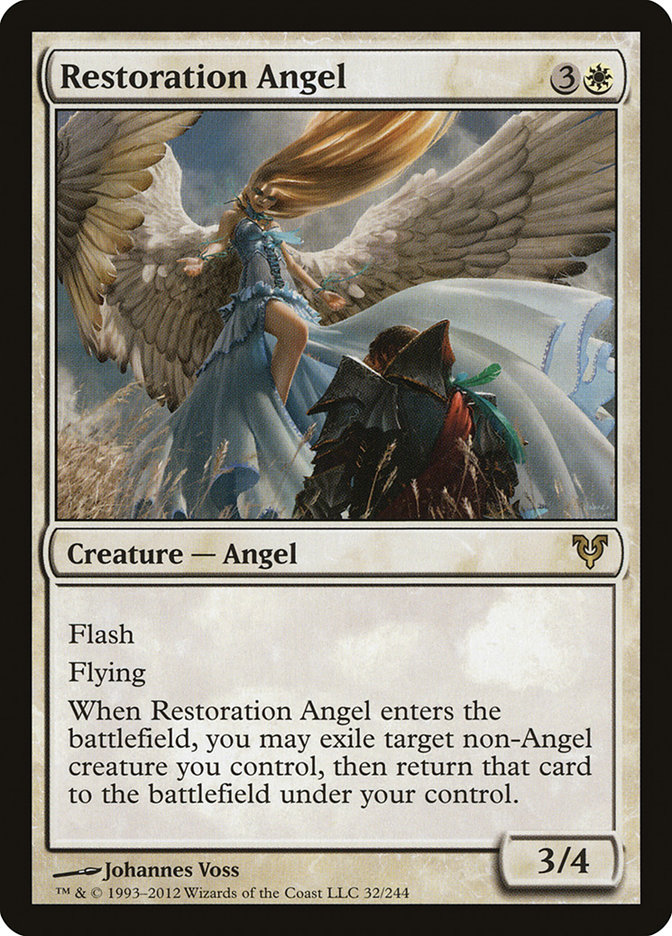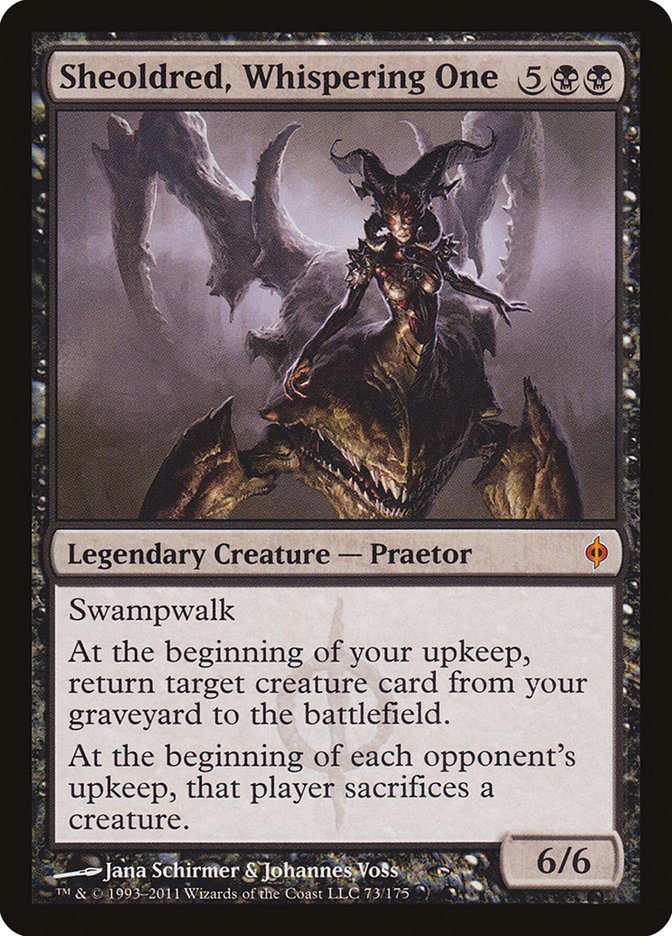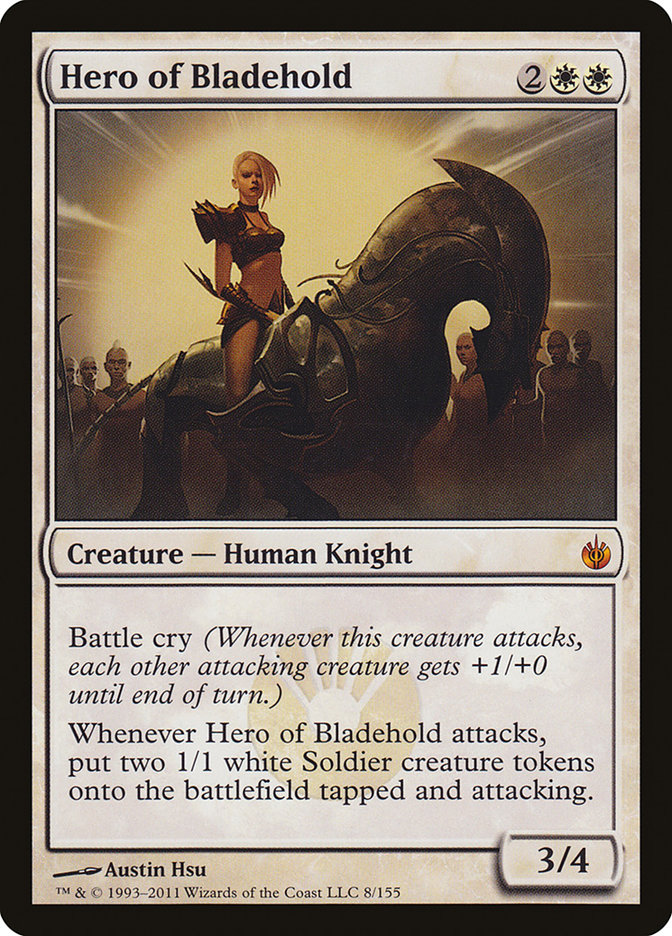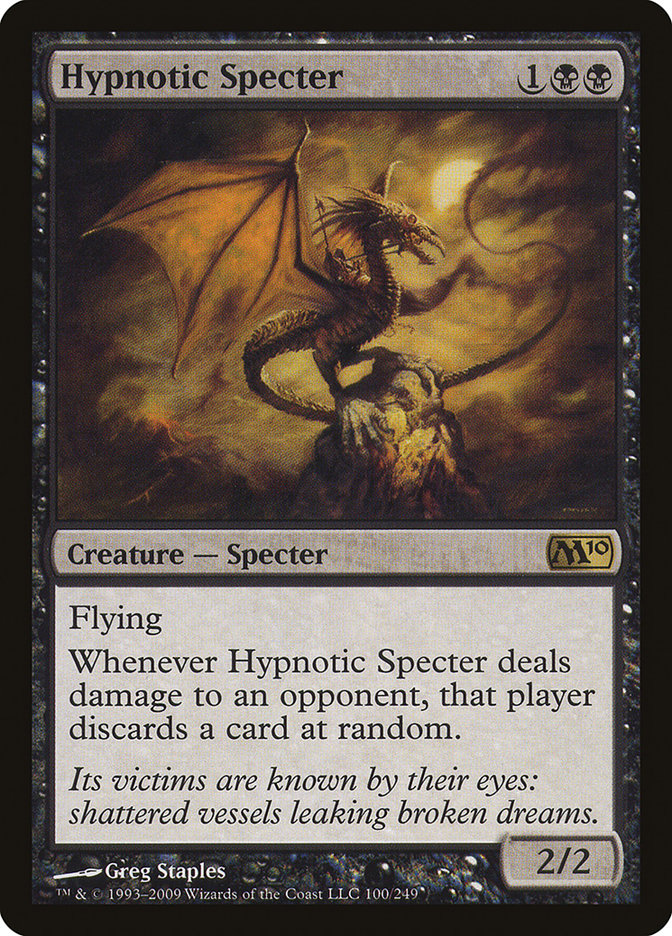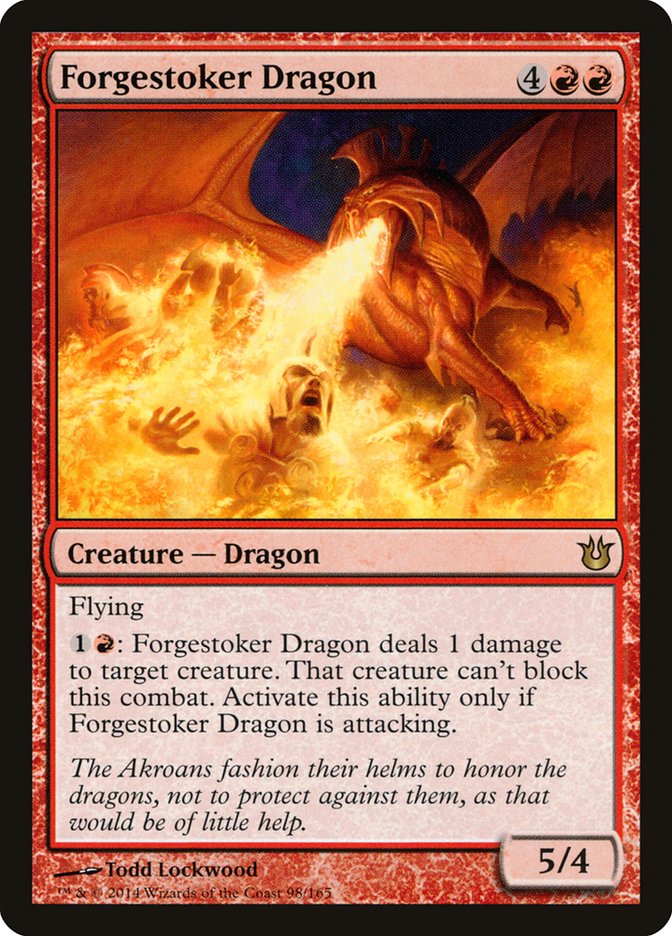The dawn is rising over the new set; we’ve seen all 165 cards, and we love some and hate others. I’ve seen a good handful of fun targets for brewing nestled amongst the chase rares and Limited fodder, and a lot of planning for Standard both through Theros and previous sets has become clear. All of the three-mana hybrid guys are even more insane now that they activate the new Gods. Everybody I know has been jawing about their favorite cards from the new set; whether Kiora, the Crashing Wave is fly or whack; and what effects Born of the Gods will have on Standard in the coming weeks.
If you know me, though, I’m thinking more about the mechanics of the set and how to capitalize on the retinue of choices we have in Standard to complement them. Heroic and devotion have made their return, but two mechanics have sprung up that while matching the theme do little to pay tribute to their predecessors.
Okay, well, they do pay tribute.
Tribute is a bizarre new mechanic that gives the choice of which bad thing occurs when a creature comes into play to the opponent. "Punisher" mechanics are nothing new to Magic, but tribute offers a fun take on this familiar dilemma. Ornitharch, who I think is one of the uncommon options that you might run into this weekend, offers you five power of flying or . . . five power of flying. As you play through the set, you’ll start to learn and predict your opponent’s position based on their decision to pay or forgo tribute. If they have removal or a threat big enough to square off with the creature, they’ll pay up.
Tribute is pretty straightforward, but the second mechanic, inspired, has opened up a whole wealth of possibilities.
Every time your creature untaps, you get the (generally) beneficial effect of drawing an extra card. Plenty of things tap your creatures—combat, activating abilities, and even regeneration locks them down for a turn. Sounds great!
. . .
Well, let’s think about it for a sec.
Those of you who’ve read my articles for a while know that I love to push the envelope of playability by exhausting avenues to utilize mechanics, small interactions, and minute synergies to develop nifty (albeit often irrelevant) decks. I’m very excited about inspired as a mechanic to manipulate, but I’m not wearing my rose-colored glasses; I’m aware of what perils lie ahead for a mage seeking such inspiration.
To highlight the way we should evaluate the keyword "inspired" (and previous similar triggers for that matter), we need to take into consideration where it lies on the power scale. Today I want to delve into something I’ve been plotting for a while; I’ve noticed that both seasoned and new players alike have a tendency to place the same value (or very similar value) on a creature, spell, or permanent based on the last part of a trigger’s effect and not on the first part.
Triggered abilities have been around for the breadth of Magic’s history, but I’m not sure anyone’s broken them down by their power level in the strictest sense. In my mind, triggers can be divided into five tiers of power, and spells that bear these triggers can be evaluated based on the timing of their trigger as well as by the trigger’s power. These tiers assume that the triggers are the same (drawing a card for example) and that no other permanents affect the outcome of these triggers.
Tier 0: Casting Triggers
As long as you have priority, these triggers will go on the stack. Triggers occurring the moment you cast them (or play them in the case of lands) are relatively rare, but these are innately the most powerful triggers because your opponent cannot prevent them from going on the stack. Even if you respond right away or counter Ulamog, the Infinite Gyre, you still have to deal with losing one of your precious permanents.
Tier 1: Enters-The-Battlefield Triggers
This effect requires only that your creature makes it past a counterspell. Once the spell resolves, this trigger appears next. This is the most common tier of interactions that top-level decks have used in the past. They require no additional effort, and many ETB effects have dominated formats in which they’ve existed. Other similar effects, like activated abilities that require no mana cost and dying/leaves the battlefield triggers, have the potential to rank in tier 1. But they’re sometimes harder to control in the latter’s case, and the cost to activate the ability of the former may require other cards to fully utilize.
Tier 2: Upkeep Triggers
Cards with strong upkeep abilities have dominated tournament, casual, and Commander tables for years. These effects require that the creature survive until your next turn. Removal or a desperate combat could remove this permanent or creature’s trigger from the battle plan. End step triggers, such as those from Kiora, the Crashing Wave’s emblem, are slightly more powerful, while the addition of multiple players, each with the potential to destroy your impending trigger producer, make upkeep and end-step triggers less powerful.
Tier 3: Attack Triggers
Creatures or permanents that contain a trigger when they (or something related to them) attacks constitute the next tier. Bear in mind that in general tier 3 abilities are a significant step down from tier 2. Tier 3 triggers are only allowed to occur if the creature survives a whole turn, through your opponent’s draw step and into combat where you must have a safe enough battlefield to attack (assuming you’re not tossing your critter under the bus strictly for the trigger). When coupled with powerful or synergetic creatures, these triggers can still turn games upside down, but there are more factors to consider before you wade into battle.
Tier 4: Saboteur Triggers
Although challenging, good old "Hyppie" reminds us that effects that trigger upon dealing combat damage to a player can have a drastic impact on the game. Saboteur triggers require everything tier 3 triggers need, but they also must avoid blockers (or have the ability to trample over them) in order to trigger. In some board states, this is difficult or impossible to achieve without a little backup from your hand. Some effects however are worth working for.
Tier 5: Untap Triggers
And here’s where we find inspired.
Given a traditional board state, creatures with inspired must rely on staying in play for two turns, the second of which they must successfully attack and survive, and on that third turn you finally get its effect. Without a card that allows you to manipulate the tap/untap state of your cards, this is the path you must take to trigger your inspired creatures.
Seems a little weaker now, doesn’t it?
Well, weeks of planning and consideration haven’t taught me my lesson. Here’s my first brew of the new Standard, in which I use far too much of this tier 5 mechanic.
Creatures (20)
- 3 Deathrite Shaman
- 1 Artisan of Forms
- 4 Tormented Hero
- 4 Agent of the Fates
- 4 Pain Seer
- 4 Siren of the Silent Song
Lands (18)
Spells (22)
- 4 Island
- 2 Springleaf Drum
- 3 Thoughtseize
- 3 Gift of Orzhova
- 3 Hidden Strings
- 4 Boon of Erebos
- 3 Triton Tactics
Sideboard

I think Siren of the Silent Song is my favorite inspired creature, which has the potential to make your opponent discard each turn that you protect it. Built-in evasion means you’ll be able to reliably tap it. Springleaf Drum, perfectly crafted for this set, lets you tap down creatures at well. Boon of Erebos provides one-mana protection, but it also taps an untapped target, meaning you will be inspired during your next turn. Hidden Strings satisfies both heroic and inspired triggers (yes, you cast it each time your cipher trigger occurs).
All in all, it’s fairly straightforward, but it showcases the possibilities of inspired without putting too much stock in it. Well, maybe it does put a bit too much. A blue-heavy shell with some of the neat heroic folks from that neck of the woods is also a possible path to take. Pain Seer ain’t no Dark Confidant, but he’s neat to play with. And it does feel good triggering an inspiration.
This weekend you’ll hopefully be gathering with old and new friends at your local shop for the set’s Prerelease. If you live close enough to Roanoke to go to the Star City Game Center, I highly recommend you give it a whirl; you can find serious and casual players alike, and they run a great fast event. Even if you can’t do that (or maybe you haven’t considered attending a Prerelease at all before), I recommend you give this weekend’s offering a shot.
In Theros’ Prerelease, each player selected a color and received a Prerelease pack with a color-heavy extra pack and five boosters to craft their Sealed creation. This set follows the same concept. For Theros, our store ran out of black, white, and blue packs instantaneously; I had registered early enough to secure my own, but I was one of the lucky few. Black proved to be a dominant choice, with promo rare Abhorrent Overlord dominating any game in which it was resolved.
Does black hold its own in Born of the Gods land? Well, I’m not so sure. Given the promo rare, my experience in Theros Limited, and the general stock that Born of the Gods adds to each color offering, I’ve flip flopped.
Red is my choice this time around. Red has proven to have strong creatures in Theros, and its removal allows you to win the quick game and prevent detrimental chump blocks, clearing the path to a crumbling opponent. The astute and prepared Prereleaser has already memorized each of the five promo rares of each color, knowing he or she will encounter them throughout the night/early morning. With the exception of the green one, each rare flies.
Forgestoker Dragon offers a solid five evasive power in a package that also lets you push through your ground team. Sealed matches tend to be slower and lighter on removal, and Forgestoker Dragon is the perfect icebreaker to get you into the combat party. Alongside creatures large enough to battle with green’s mightiest bruisers and removal that can thwart weaker white and blue offerings, red seems to me to be the clear choice for Sealed.
Prerelease Ranking
#1: Red
#2: White
#3: Blue
#4: Black
#5: Green
Sadly, green doesn’t much on the common/uncommon level that gets me excited to sleeve it up on Saturday morning. Sorry, Forests.
I’ve already got over a dozen brews set aside for the new Standard. Mono-Black Devotion gets plenty of tools to continue dominating the format, but I feel confident new archetypes and color combinations can emerge from these eight score cards.
I’ll be bringing you a breakdown of my Prerelease experience next week, and I’ll have a couple Commander brews to get your mind flowing. Then two weeks from now we’ll start jumping into Standard the moment these gems are ready!
Good luck on Saturday, and don’t forget to inspire yourself!

